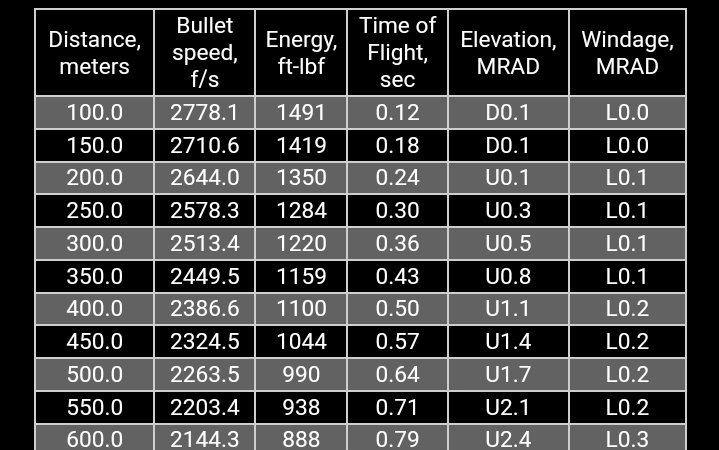Scopes have elevation (top turret) and windage (side turret). Both are required as one must dial in adjustments for both usually. (Range and wind conditions)
The range and adjustment is determined first, lets say I'm shooting at 5oo metres with a 3mph wind from 8 o'clock (-120°) which I have determined by observation and skill built up over a lot of training and field-work.
As per the chart I created on my ballistics solver for you...that's 1.7mil up and 0.2 mil left (to account for the wind coming from that direction as mentioned. (Keep in mind this varies depending on rifle, calibre and so on.)
So, two clicks left on windage and 17 clicks up on elevation. (As per this post and the image of the turret, 1 click = .01 MRAD)
It moves the reticle (basically) so I'd shoot directly for the centre of the cross-hairs. Make sense?
Likely more to that as it’s just focusing on vertical never mind horizontal.
Both horizontal and vertical planes are critical. A miss high or low or a miss left or right is still a miss.

There is another way called, hold-over.
In this case, I don't dial in the adjustments, but use the hash-marks, the same 1.7U and 0.2L, and shoot for that point on the reticle rather than the centre of the cross hairs. That's used for very quick shooting when the time to dial in doesn't exist. At long range, say 500m+, most would dial in.
So...in the case of that terrorist beside the Humvee...I'd dial it in if I had time and aim for his head because he's laying down and that's likely all I'd see. At 500 metres it's an easy shot. At 1500 metres no so easy. In the latter case, I'd look for centre-mass meaning the largest thing I could aim for to make the shot count. Make sense?
Feel free to ask questions.